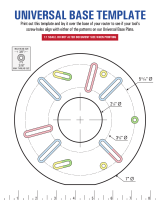
ii
Keyboard Modifiers......................................................2-7
RS-232 Baud Rate...............................................2-10
RS-232 Word Length: Data Bits, Stop Bits,
and Parity .......................................................2-10
RS-232 Receiver Time-Out .................................2-11
RS-232 Handshaking...........................................2-12
Wand Emulation Connection ...............................2-12
Wand Emulation ........................................................2-13
Data Block Size ...................................................2-13
Delay Between Blocks .........................................2-14
Overall Checksum ...............................................2-14
Wand Emulation Transmission Rate ...................2-15
Wand Emulation Polarity .....................................2-15
Wand Emulation Idle............................................2-16
Chapter 3 - Output
Good Read Indicators..................................................3-1
Beeper – Good Read.............................................3-1
Beeper Volume – Good Read................................3-1
Beeper Pitch – Good Read....................................3-2
Beeper Duration – Good Read ..............................3-2
LED – Good Read .................................................3-2
Number of Beeps – Good Read ............................3-2
Good Read Delay ........................................................3-3
User-Specified Good Read Delay................................3-3
Trigger Modes..............................................................3-4
Manual/Serial Trigger ............................................3-4
In-Stand Sensor Mode (4600r only).............................3-5
Scan Stand Mode ........................................................3-6
Scan Stand Symbol ...............................................3-6
Presentation Mode.......................................................3-7
Presentation LED Behavior after Decode..............3-7
Presentation Sensitivity .........................................3-8
Streaming Presentation™ Mode..................................3-8
Image Snap and Ship ..................................................3-9
Hands Free Time-Out..................................................3-9























